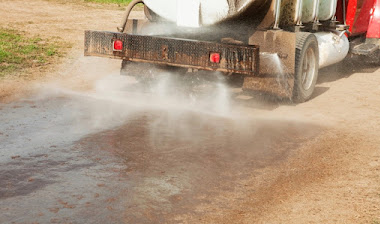Impacts of Shale Gas Wastewater Disposal on Water Quality in Western PA
December 20, 2013PA Supreme Court Strikes Down Controversial Portions of Act 13
December 20, 2013By Diane Huskinson, Stroud Water Research Center, December 2013
An explosion of natural gas drilling in recent years is primarily the result of advances in horizontal drilling technology and the use of hydraulic fracturing (aka fracking) to release the natural gas from deep shale beds. Fracked wells can be found in the Marcellus shale in Pennsylvania as well in shale beds in Colorado, Wyoming, Arkansas, Texas, Ohio, and North Dakota.
The combination of horizontal drilling and fracking enables the recovery of formerly inaccessible natural gas (and crude oil). However, it has sparked much debate over the production of large volumes of potentially toxic wastewater that is currently stockpiled on site and later disposed of. Proper procedures for the treatment, reuse, and safe disposal of wastewater remain unsettled issues.
A question the Delaware River Basin Commission (DRBC) has asked is how the wastewater produced after a well has been fracked and is producing natural gas might affect aquatic animals if it reaches streams.
So this year, Stroud Water Research Center scientists conducted a study to evaluate how three mayfly species would respond to produced water from natural gas wells and compared them to the responses of fish and daphnid species, tiny freshwater crustaceans called water fleas. They submitted their final report to DRBC in August, and the results are now public.
What did they conclude? Produced water in concentrations near 1% will significantly affect mayflies in the short term (an exposure that lasts only 48 hours). In the long term (over the course of a 20-30 day mayfly lifecycle), it’s even lower: less than 0.25%.
Why Mayflies?
Mayflies have been a hallmark of the Center’s studies over the years — in large part because they are sensitive to changes in water chemistry, temperature, and other environmental variables.
Senior Research Scientist John Jackson, Ph.D., led the study. He said, “Mayflies are a very reliable indicator of whether a stream is healthy or not healthy. When it comes to streams, we want to see vibrant communities of mayfly species there. So their conspicuous absence in a stream tells us something isn’t right. It’s not an environment where they are thriving.”
The Method
Jackson’s team, including David Funk and Michael Broomall, compared four measures of response across the three mayfly species when exposed to a range of produced water concentrations diluted in stream water: survivorship, development time, adult body size, and reproduction rate.
The stream waters came from two Exceptional Value streams: Dyberry Creek in the Pocono region of Pennsylvania and White Clay Creek, near Stroud headquarters in Chester County.
“Dyberry and White Clay are two very clean streams,” said Funk. “The mayfly species we tested can be found in both these streams, so we started with ideal conditions.”
Before testing how the mayflies responded to produced water, the team first looked at how the mayflies responded to what scientists call a reference toxicant: in this case, sodium chloride (NaCl), which is table salt. They exposed the mayflies to a variety of NaCl concentrations and found the lethal concentration for 50% of the population: the LC50. That gave them a reference point for what the range of produced water concentrations should be because NaCl can be a major component in produced water. The produced water sample examined in this study had a NaCl concentration that was more than four times greater than in seawater.
While mayflies are a valuable species for evaluating water quality, they are not widely used outside of Stroud Water Research Center. Collecting and rearing enough at the same life stages for lab studies is difficult. Therefore, standard lab tests for water quality instead look at how fish and daphnids respond to a particular toxicant. In the 1980s and 1990s, Center scientists developed a method of producing large numbers of mayflies for research studies.
In addition to comparing the response among three mayfly species (Centroptilum triangulifer, Procloeon rivulare, and Pseudocloeon frondale), the team also compared mayfly responses to those observed by a private testing firm using two species traditionally used in water toxicity testing: a daphnid species (Ceriodaphnia dubia or water flea) and a fish species (Pimephales promelas or fathead minnow). Comparing the different species helps scientists determine which organisms are most affected when exposed to produced water.
The Results
- Half the mayflies across all three species died after 20-30 day exposures to concentrations of less than 0.5% produced water.
- Among the mayflies that survived to reach the adult stage, development time slowed, indicating they were stressed.
- Reproduction rate was significantly reduced in two of three species and somewhat reduced in the third, mostly because mortality increased and development time slowed.
- The water flea was less sensitive than mayflies to produced water, but the fathead minnow was more sensitive than mayflies.
- The produced water was more toxic to mayflies in soft waters (Dyberry Creek) than in moderately hard waters (White Clay Creek).
“What this tells us,” said Jackson, “is that produced water is extremely toxic for mayflies even in concentrations as low as 1%. That’s significant. For example, in a small stream, it won’t take much produced water entering the stream for mayflies to die or otherwise show signs of stress, which together could result in measurable changes in stream invertebrates and fish.”



